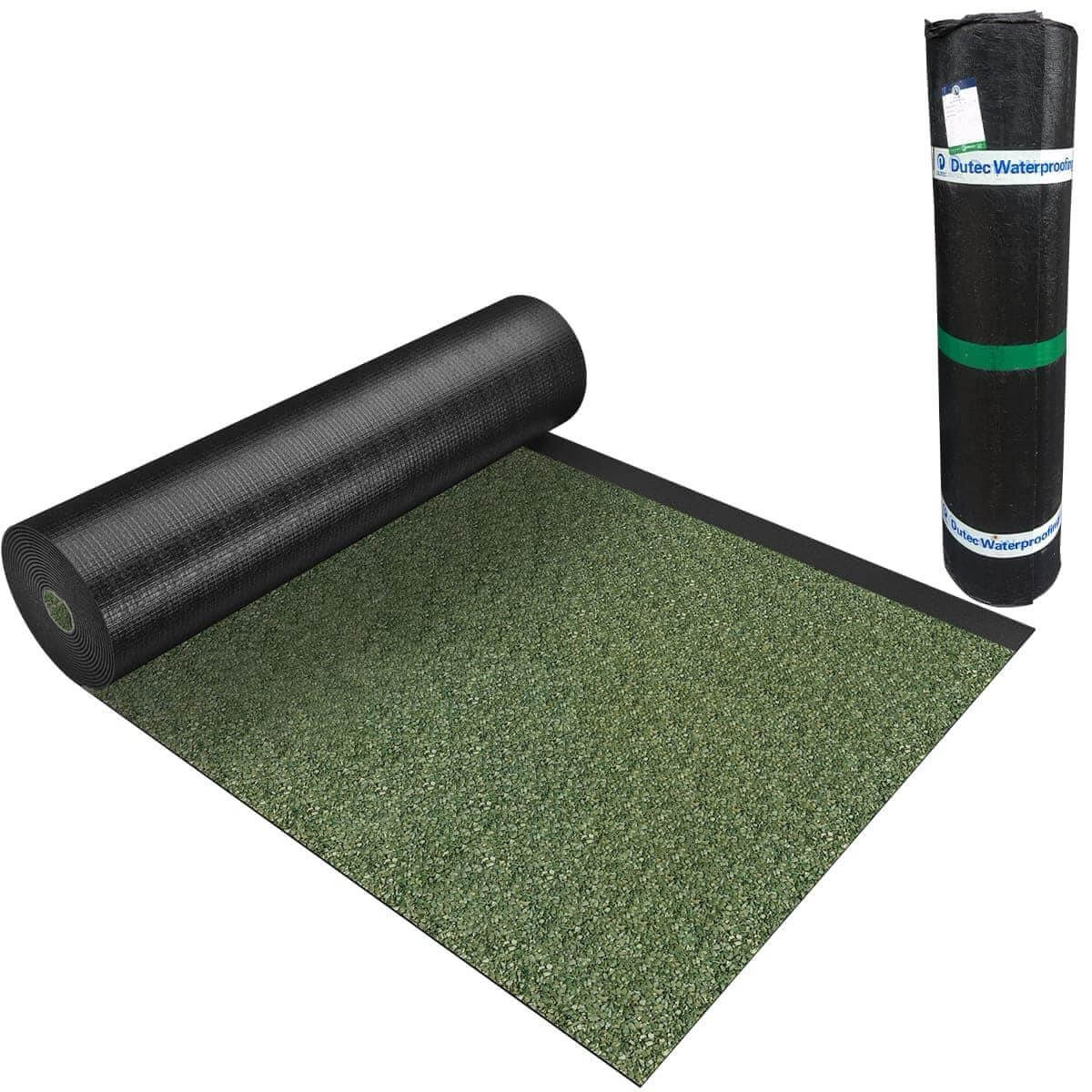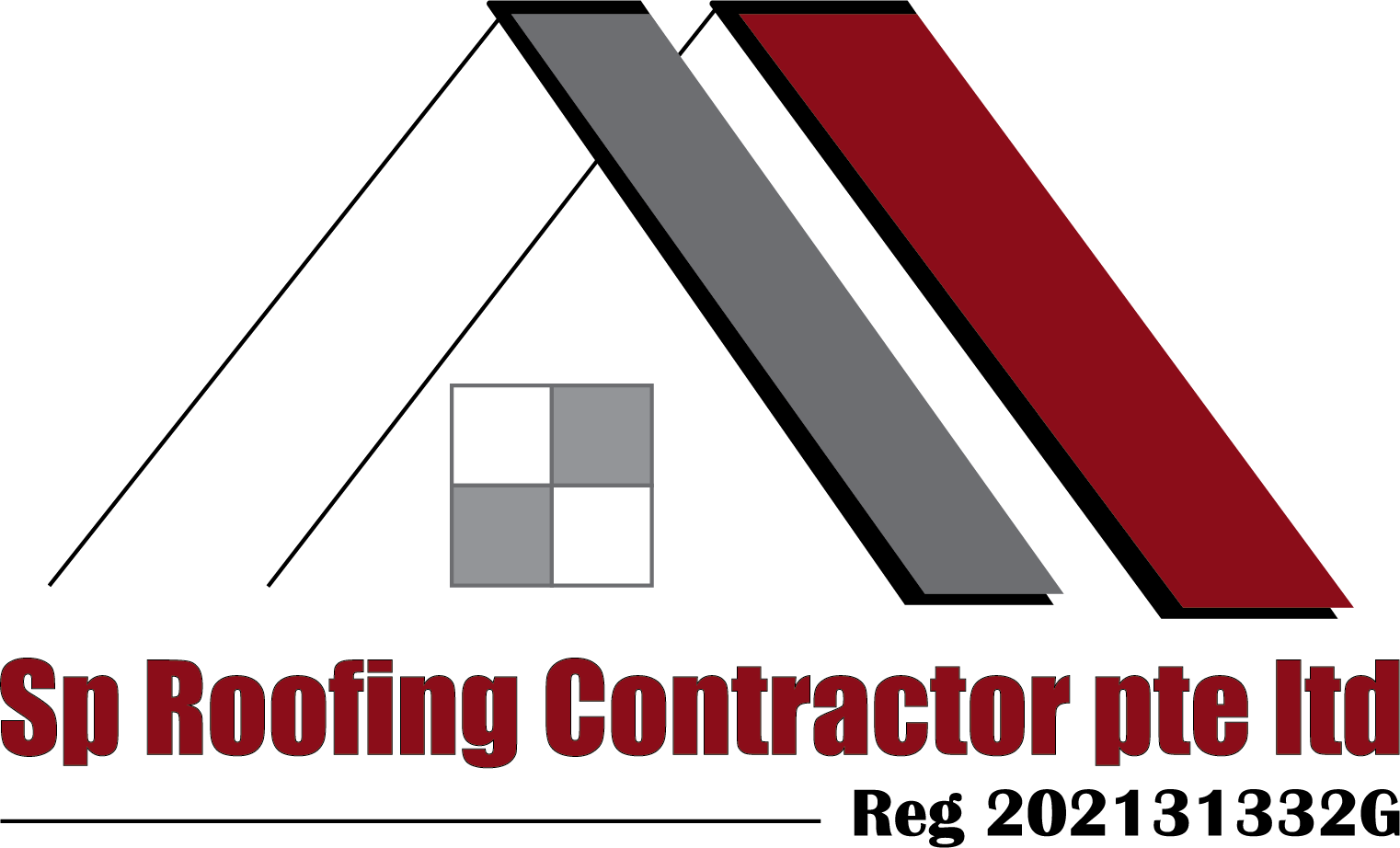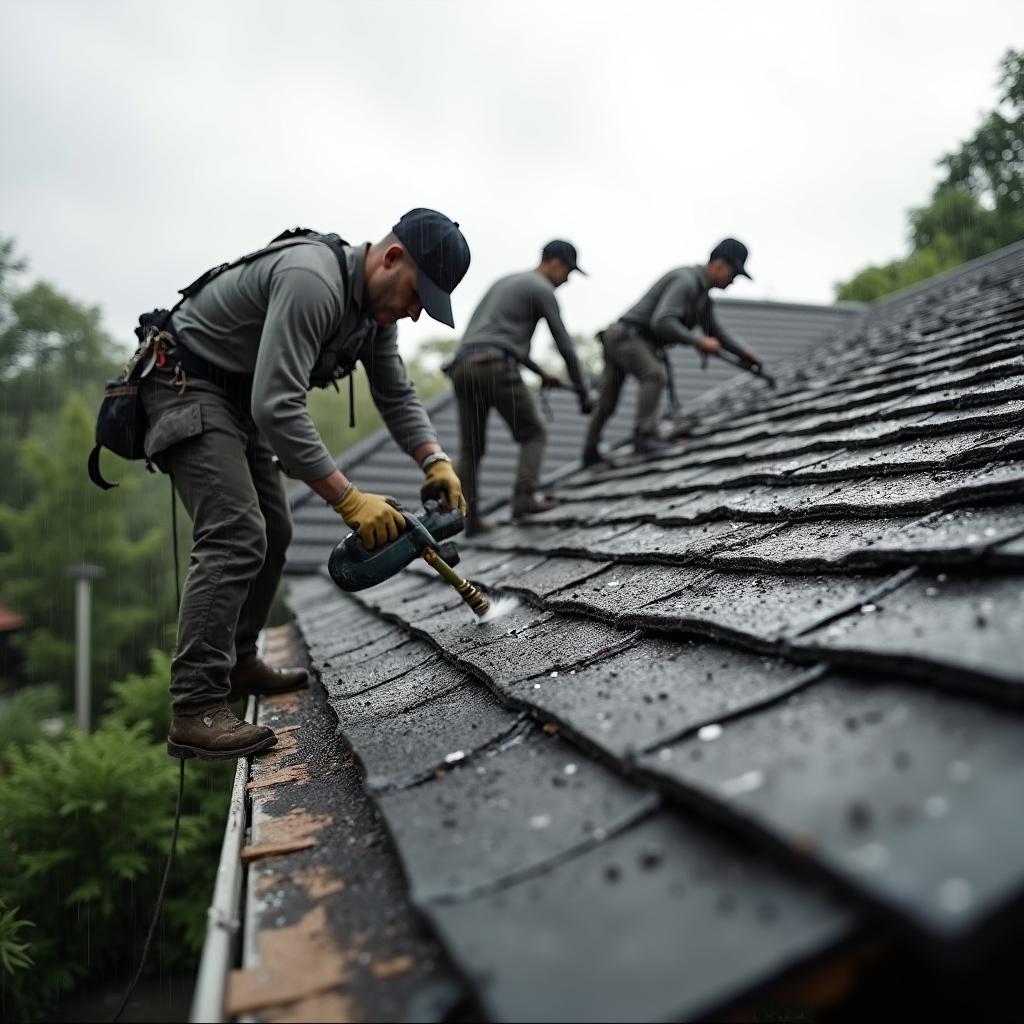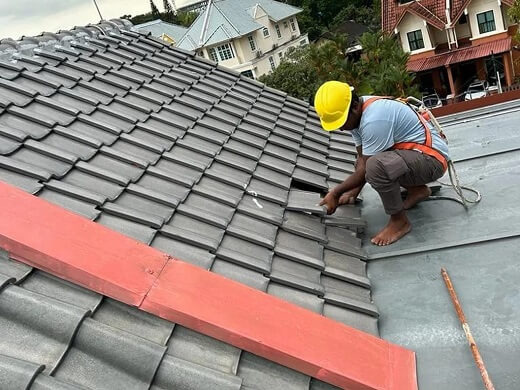Is It True that Roof Waterproofing Prevents Mold and Mildew in your Home!
Did you know that mould and mildew aren’t just an annoyance, they can create serious health problems and extensive damage to your home? For anyone who has seen those ugly black patches on the ceiling or the walls at home after a heavy rainstorm, you know that mould and mildew growth can flourish very quickly in a wet environment. The good news? Roof waterproofing can protect your residence from these hazardous invaders.
This article discusses how roof waterproofing protects against mould and mildew, how these issues affect your health and property, and why professional application is essential for long-lasting protection.
The Moulds and Mildew in Your Home: The Hidden Dangers!!
Mould and mildew love the damp, humid environments just like the tropical weather in Singapore. Those fungi can grow in places where moisture collects, such as roofs, ceilings and walls. Besides being unpleasant to look at, mould and mildew can present various dangers. Such as:
1. Mould Exposure Related Health Hazards
- Health Effects: Mould spores can cause allergic reactions and respiratory problems. Those with asthma, allergies and compromised immune systems are particularly susceptible. Symptoms include coughing, wheezing, and shortness of breath.
- Skin Irritation: Long-term exposure to mould can lead to skin rashes, irritation or other skin problems. This is particularly concerning for kids and those with sensitive skin or pre-existing conditions, such as “ eczema ”.
- Infections: Although uncommon, some forms of mould can cause serious infections. Aspergillus, for instance, can cause lung infections, especially in individuals with weakened immune systems.
- Long-term Health Effects: Continued mould exposure can result in more serious conditions such as hypersensitivity pneumonitis (inflammation of the lung), or more lethal infections due to fungi, particularly in sensitive groups like children, senior citizens, and immune-compromised persons. Though everything sounds similar but, if you learn properly each one is more dangerous than the last one. In simple words, moulds are not the home pets you would like to befriended for a long time. Learn more on long term health effects of mold exposure from Axon Integrative Health article.
2. Property Damage
- Structural Damage: Mould can compromise your home’s structural elements, including wood beams, drywall, and insulation. Over time, mould can cause expensive damage and, worst case, a potential structural issue in your home.
- Aesthetic Harm: Mould causes unsightly, sometimes impossible to remove stains. It can tarnish the appearance of your walls, ceilings, and even furniture, which diminishes the overall aesthetic of your home.
- Odours: Mould emits a musty odour that can be persistent, impacting your indoor air quality and making your home unpleasant to live in.
Water Leakage Potential On Common Roof Areas!
There are some parts of your roof which are prone to water infiltration, which can increase the likelihood of having mould and mildew problems. Monitor and focus on these parts while waterproofing:
- Roof Valleys: Static points where two slopes come together on the roof may often be a place for water to pool up. These can weaken over time and leaks can form if not waterproofed correctly.
- Around Roof Vents and Chimneys: Roof vents, chimneys and skylights are also common sources of leaks, particularly when seals or flashing is damaged. And good waterproofing around these structures prevents moisture from getting in.
- Eaves and Overhangs: The eaves, or overhanging edges of your roof, are exposed to water intrusion during heavy rain. If the flashing here isn’t adequately sealed, moisture can enter the attic or walls with relative ease.
- Ridge and Soffit Vents: Rainwater can leak into the attic through ridge and soffit vents if they’re not properly sealed, resulting in mould growth.
Aerating these areas while you are waterproofing can help prevent water damage and mould growth.
How Roof Waterproofing Relates to Mould Prevention?
Your roof waterproofing quality relates directly to the prevention of mould. Here’s how:
- Barrier Against Moisture: Waterproofing prevents any water from penetrating your roof structure, and this means the moisture will not accumulate which is a perfect environment for mould and mildew to breed.
- Lower Humidity: Waterproofing materials help to keep the humidity levels inside your home lower, which means the risk of moist lower as well. Low humidity is everything when it comes to a dry, mould-free space.
- Protecting Vulnerable Areas: Waterproofing areas that are most susceptible to water or moisture seeping in, including vents and eaves, this barrier keeps moisture from accumulating in hard-to-access places, minimizing mould and mildew growth.

Materials and Methods for Waterproofing Roof
There are different materials and techniques to waterproof your roof. So, picking the right one for your home is key to how well you’ll prevent mould and mildew:
- Bituminous Membranes: Perfect for flat roofs, offering a tough, waterproof barrier. They are composed of asphalt-based materials, and typically feature fiberglass reinforcements to provide additional structural strength.
- Polyurethane Coatings: Ideal for sloped roofs. They create a water and UV-resistant, seamless barrier, offering a long-lasting key.
- Elastomeric Coatings: Known for their flexibility, elastomeric coatings expand and contract with temperature changes, making them suitable for roofs exposed to the elements in tropical climates like Singapore.
- Liquid Rubber: These coatings (those which are liquid rubber) are applied directly on the surface which cures to form a waterproof seamless layer, acting as a barrier to water and leaks.
- TPO and PVC Membranes: These single-ply membranes are robust as well as water-repellent, making them suitable for residential and commercial buildings alike. They are light and quick to use in contemporary waterproofing.
Learn the best 5 methods of wateproofing which will help prevent moulds and mildews grow in your property roofs.
Should You Waterproof Your Roof DIY or Hire a Contractor?
Although DIY waterproofing solutions might sound appealing, hiring a professional guarantees that the task is performed correctly the first time, thus assuring long-term protection and peace of mind:
Pros of Hiring a Professional for Waterproofing
- Expert Evaluation: Professionals can provide you with an in-depth evaluation of your roof’s condition, so they can identify any problem areas and advise on the best waterproofing treatment for your specific situation.
- High-quality Materials: Professionals can access high-grade materials that are more suitable for long-term waterproofing.
- Warranty and Guarantees: Many professional waterproofing services offer warranties, ensuring that if issues arise, they’ll be addressed at no extra cost.
Cons of DIY Waterproofing:
- Lack of Expertise: DIY methods without proper knowledge can miss trouble spots, misuse applications, and make the problem worse.
- Limited Materials: DIY products may not be as effective as professional-grade materials.
- No Guarantee: When DIY waterproofing is done, if there are issues, you will not have a warranty to rely on. Thus after all the hard work and long hours, you have to redo it, spend again on materials and the list goes on!!
Professional Application: The Key to Effective Waterproofing
Although it appears to be a cost-effective option, application by an expert is critical to prevent mould permanently. Here’s why:
Proper Surface Preparation
It is necessary to clean the whole roof first and repair existing damage before you start applying waterproofing materials. They have all the expertise and tools at hand to carry out a proper job when it comes to surface prep, which ensures better adhesion and effectiveness in the long run. It’s like applying moisturizer on your dirty skin! Better way to do it is to clean your face and apply it for the best results.
Expert Knowledge of Materials
Different types of roofs and climates require different waterproofing solutions. Experts know what materials are most suitable for different types of roofs. This means that for flat roofs, bituminous membranes or coating, and for the sloped roof polyurethane are the most commonly used materials.
Avoiding Common Mistakes
Waterproofing is not for the faint of heart. When it’s not applied properly, there can be gaps or spots that you miss that allow water to easily seep in, totally undoing the point of waterproofing. They make sure every inch of your roof is sealed properly.
Long-Term Guarantees
Professional waterproofing services usually offer warranties. In a certain period, if your roof starts leaking, the company will address the problem without any additional cost to you and give you peace of mind and protection for a long time.
After using a professional waterproofing service from SP Roofing Contractor, Mr. Lee’s home in Bukit Timah stayed dry even during the heaviest monsoons. W offered a 5-year warranty, ensuring any future issues would be resolved at no extra charge. Healthy roof + Happy client = Successful SP Roofing Contractor.
Regular Maintenance to Ensure Effectiveness
Waterproofing is not a one-time solution. Regular roof inspection and maintenance such as routinely roof washing or cleaning are crucial to ensure that your roof performs well. Weathering over the years can efficiently wear down waterproofing materials, so taking action early might help detect issues like leaks and moulds. Get a roof inspection at least annually, especially if you experience heavy rain or storms in your area.
Conclusion: Protect Your Home, Health, and Wallet
Waterproofing your roof is more than just a preventive measure, it’s an essential step in maintaining a healthy, safe, and valuable home. By preventing mould and mildew from taking hold, you’re not only protecting your property from damage, but you’re also safeguarding the health of your family. With the right waterproofing materials and professional help, you can ensure your home stays dry, mould-free, and safe from the harmful effects of excess moisture.
Ready to protect your home? Get in touch with a trusted waterproofing expert like SP Roofing Contractor today to schedule your free roof inspection and ensure your home is protected for years to come. Trust us like Mr. Lee did!
Frequently Asked Questions (FAQs)
1. How Long Does Roof Waterproofing Last?
Waterproofing materials typically last between 5 to 10 years, depending on the type of material used and environmental conditions. In Singapore’s tropical climate, regular inspections and occasional reapplication might be necessary due to high humidity and heavy rainfall.
2. What Are the Benefits of Roof Waterproofing Beyond Mould Prevention?
Roof waterproofing offers several additional benefits:
- Protection from UV Rays: Prevents UV degradation, prolonging the lifespan of the roof.
- Reduced Energy Costs: Reflective coatings can lower cooling costs by reducing heat absorption.
- Prevents Rust and Corrosion: Protects metal roofs from rust due to water infiltration.
- Increases Roof Longevity: Shields roofing materials, preventing damage and extending their life.
3. Which Areas Are Prone to Heavy Rainfall and Might Require More Attention to Waterproofing?
In Singapore, areas that experience frequent heavy rainfall or are located in low-lying or coastal regions are more susceptible to water infiltration. Areas such as Orchard Road, Bukit Timah, and Sentosa often face higher humidity levels and rainfall, making them more prone to water damage and mould growth. Homes in these regions require more attention to roof waterproofing, especially during monsoon season
4. What Should a Homeowner Do If They Find Out They Require Waterproofing Services?
If a homeowner discovers they need waterproofing, the approach depends on the situation:
- DIY Approach: If the issue is minor (e.g., small leaks or localized damage), some homeowners might attempt a DIY fix. However, this is only viable if the damage is isolated and manageable.
- Professional Approach: For widespread or complex issues (e.g., significant leaks, mould, or structural damage), it’s best to call a professional waterproofing service immediately. Pros bring in the right materials and expertise to address hidden problems, prevent long-term damage, and provide a warranty on the work performed.
5. Which Types of Roofs Require More Waterproofing?
Certain roof types are more prone to water damage due to their design and materials. These include:
- Flat Roofs: More susceptible to water pooling and leaks due to their lack of slope. Waterproofing is essential to prevent water infiltration.
- Metal Roofs: While durable, metal roofs can suffer from rust and corrosion without proper waterproofing.
- Tiles and Shingles: While durable, they can crack and allow water to seep through, requiring periodic reapplication of waterproofing to maintain their integrity.
Generally, flat roofs need to be re-waterproofed more frequently, usually every 5-7 years, while shingled or metal roofs may need waterproofing every 7-10 years, depending on the material quality and environmental factors
6. Does the Roof Only Require Waterproofing, or Do Other Areas of the Building Need Waterproofing?
Waterproofing is not limited to the roof; other areas of your home may also need attention:
- Walls and Foundations: Especially in areas with high groundwater levels or heavy rainfall, the foundation and basement walls should be waterproofed to prevent leaks and water damage.
- Windows and Doors: If improperly sealed, they can allow water infiltration during storms. Ensuring proper sealing or waterproofing around frames can protect against water damage.
In cases where the roof has significant leaks, it’s recommended to inspect other vulnerable areas like windows, doors, and basements for potential water damage. If necessary, these areas can also benefit from waterproofing to ensure overall protection



0 Comments